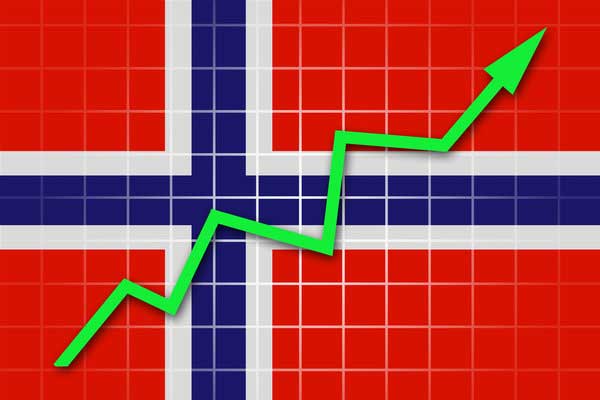Norway recently uncovered the world’s largest supply of phosphate, a rare material used in fertilizers, batteries, and solar panels. The 77 billion tons discovered could double the global supply and be worth up to $24 trillion. But will this mineral wealth be an economic miracle or curse?
Norway is known for its prosperous, well-managed economy. But throughout history, rapid growth from natural resources has often led to instability and inequality. Will too much of a good thing undo Norway’s success?

Norway Before Finding Oil: A Solid But Unexceptional Economy
Before the 1970s, Norway had a stable but unspectacular economy. Fishing was the largest industry, but Norway wasn’t poor. It benefited from trading with wealthy neighbors. Still, Norway wasn’t rich compared to Western Europe and Scandinavia.
That changed when Norway discovered massive oil and gas reserves in the late 1960s. Production began in the early 1970s, mostly through the state-owned company Statoil (now Equinor). Private companies could also operate to encourage further exploration. But Norway mandated a 50% state share in all production licenses to ensure public ownership of its resources.
Statoil invested heavily into refineries to process crude oil and natural gas, selling energy products directly to European consumers. Today Norway refines so much oil it imports crude petroleum to meet capacity.
Norway kept an unusually high share of oil revenues for its citizens instead of letting companies take most profits. Being part of NATO and beyond the Cold War geopolitics helped Norway avoid relying on foreign entities to fund its oil extraction.
Still, many advanced democracies let oil companies bully them into relinquishing natural resource wealth. Norway handled its oil boom exceptionally thanks to small population, robust democracy, existing capital, and state control.
Transforming Oil Wealth into Sustainable Prosperity
Getting fair value for natural resources is just the first step. The real challenge is investing the money responsibly to build lasting prosperity instead of instability.
Some oil states like Venezuela distributed revenues directly through social programs and low taxes. But this warped the economy by encouraging runaway spending. And sanctions compounded the turmoil. Alaska pays residents oil dividends and levies no income tax. But Alaska was already stable and wealthy.
Other states fund lavish development projects to encourage tourism and business to replace oil. In theory this makes sense. In practice, leaders often lack transparency and accountability around sports investments meant to boost tourism.
Low or no business taxes are also common in Gulf states seeking to shift from oil dependence. But this high spending, low tax model is likely unsustainable without oil income.
Norway took a different approach through high income, sales, VAT, and land taxes. Outwardly, Norway doesn’t appear exceptionally wealthy. There are no mile-high skyscrapers or artificial islands. Taxes don’t directly benefit citizens or infrastructure.
Instead, Norway channels oil revenues into its $1.6 trillion sovereign wealth fund. This ensures oil profits benefit future generations when reserves deplete. The fund already generates nearly as much as oil revenues through investments.
This insulates Norway from volatile commodity markets. High oil prices mean more savings and progress toward oil independence. Low prices allow withdrawing funds to maintain spending.
High taxes also give Norway economic oversight. Lowering taxes stimulates growth while raising taxes controls inflation and inequality. This flexibility requires sacrificing other revenue sources like oil and gas.
Taxes also create accountability between people and government, leading to less corruption and self-enrichment. Norway’s model has brought stability and prosperity. But natural resources have also caused crises when mismanaged.
The World’s Largest Phosphate Discovery
Will Norway handle its massive new phosphate discovery responsibly? Phosphate is essential for fertilizer, batteries, and solar panels. The $24 trillion in phosphate could triple Norway’s wealth fund in a decade, making every citizen a millionaire on paper.
Yet Norway remains silent on the discovery, downplaying the opportunity. This reveals the most overlooked factor in economics: culture. Norway has an egalitarian culture that distrusts rapid wealth accumulation.
Workers earn high wages but highly skilled workers earn less than elsewhere. Taxes reduce income inequality. This focus on equality permeates Norway’s economic policies.
The phosphate could make Norway the top producer globally. Only Morocco currently exports phosphate in bulk. As Norway ramps up production, it will drive down phosphate prices, undercutting Morocco’s main export.
Major powers have already declared phosphate strategically vital. Norway’s supply will be of great interest for economic and geopolitical influence. Handling this opportunity could shape Norway’s economy and global standing for generations. But so far, Norway remains nonchalant despite the staggering implications.
Conclusion: Norway’s Outlook Remains Strong
Norway’s vast oil reserves built one of the world’s most robust economies through responsible long-term planning and investment. The country’s new phosphate discovery has the potential to supercharge growth for decades to come.
But rapid windfalls have destabilized resource-rich countries throughout history. Avoiding the natural resource curse will test Norway’s discipline and patience. Its pragmatic culture and cautious outlook could steer Norway through unprecedented prosperity or temptation.
Either way, Norway remains well-positioned for the future thanks to its strategic sovereign wealth fund and stable economic foundations. While its phosphate industry develops, Norway seems poised to retain its spot as a model for balanced, equitable national prosperity.
